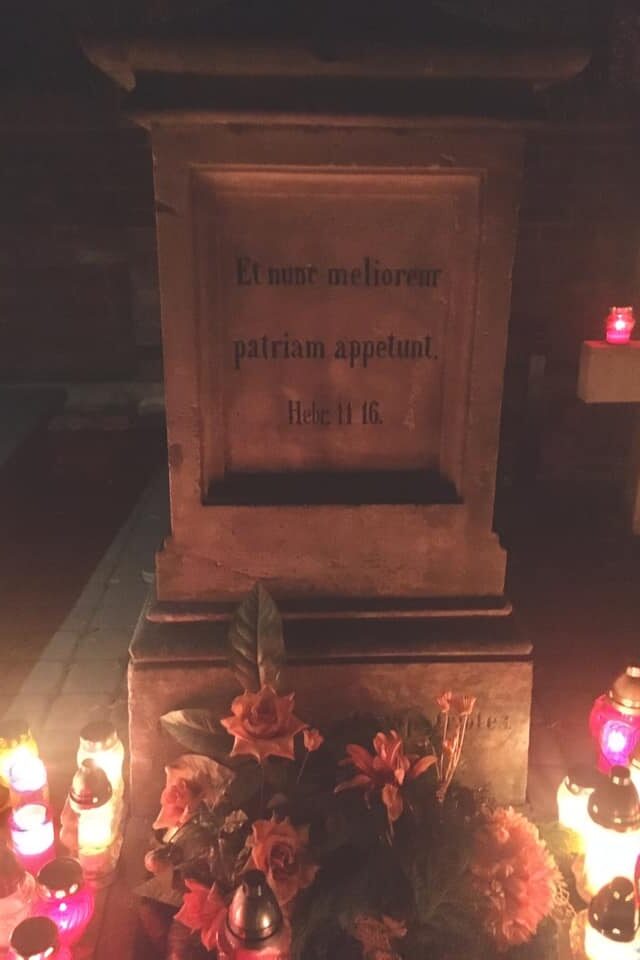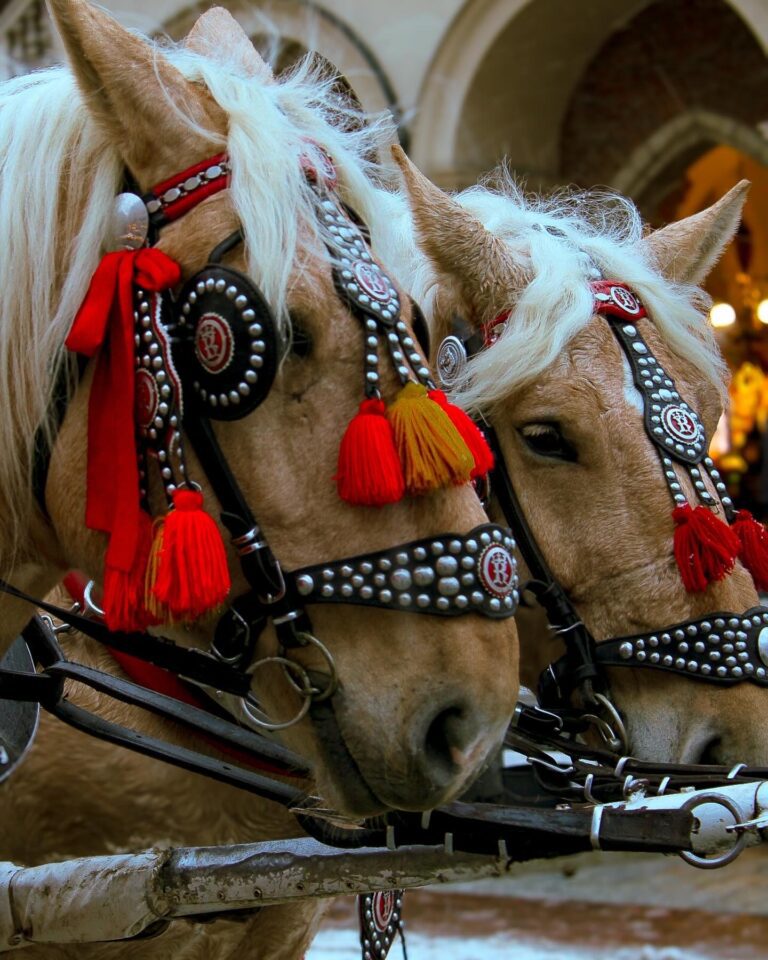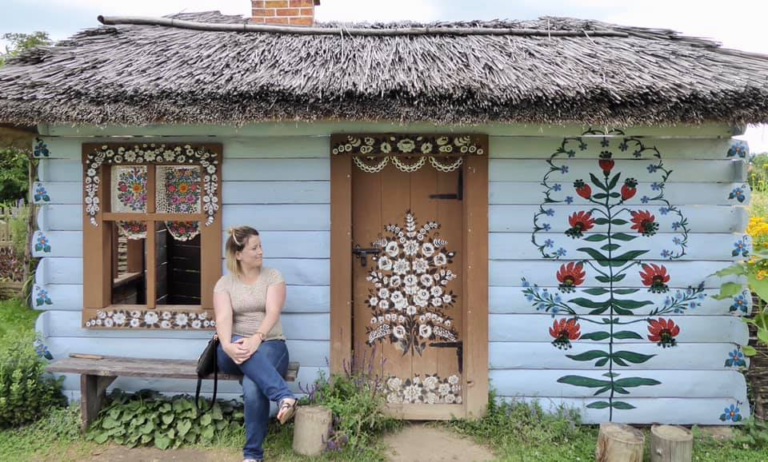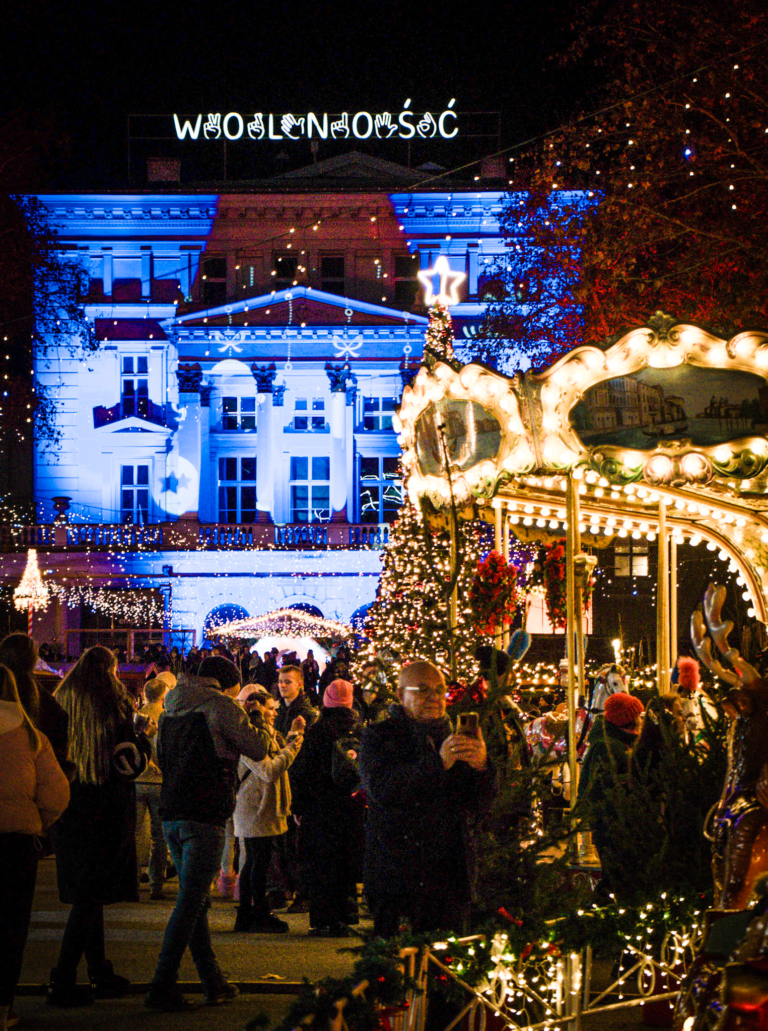All Saints’ Day in Poland: A Tradition of Remembrance
One early November evening, I was walking our dogs through the forest near our house in Poland, the route was along a path that led to a local village cemetery. The air was crisp carrying the earthy scent of fallen leaves and the forest was bathed in the soft golden light of the setting sun.
As I strolled along the familiar path, I noticed a red-orange glow emanating from the local cemetery. The sun was casting long shadows along the route, and as I walked closer to the cemetery, I noticed villagers arriving with cleaning supplies.
Some were starting the process of cleaning and tending to loved ones’ graves in preparation for All Saints’ Day. Lanterns were being placed carefully, and even some were lit. The scene was serene and haunting, with flickering lights creating a warm, inviting glow amidst the encroaching darkness.
When I returned home from my walk, I eagerly texted my next-door neighbor Aleksandra to ask what was happening. She explained that from November 1-2, they celebrate All Saints’ Day, or “Wszystkich Świętych.” She invited me to join her and Łukasz, who also happened to be my landlord at the time, to a nearby cemetery where they would be paying respects to his family members and friends.
I had only lived in Poland for 1 year and growing up in Texas and California, I knew about the traditions of Día de los Muertos, but I didn’t know much about what the Polish did. I don’t come from a religious background, so intrigued and eager to learn more, I agreed to join them for All Saints’ Day.

What is All Saints’ Day
All Saints’ Day or “Wszystkich Świętych” in Poland is a holiday that is observed annually on November 1. It is a significant day of remembrance where families honor the memory of deceased loved ones. The origins trace back to early Christian traditions and were established by Pope Gregory IV in 835 CE to “honor all saints, known and unknown”.
It has evolved from pagan traditions to a Christian observance and ties into Poland’s rich religious history. During the Soviet Occupation, the Polish faced many challenges in celebrating this holiday. Authorities attempted to secularize it, stripping it of its religious meaning and referring it to the “Day of the Dead” or “All Dead’s Day” or Dzień Zmarłych or Święto Zmarłych.
When I asked Aleksandra about this, she shared that her parents continued these customs in private to honor their loved ones during All Saints’ Day. Some even being bold enough to go to cemeteries and leave candles burning- considered an act of defiance during those times.
As this is an important holiday in Poland, roads are often busy with travelers heading back home to spend time with their families. Almost all shops and stores will be closed in honor of this holiday. People often spend time in reflection and remembrance, and you’ll find special church services held in memory of those who have passed.
You can even request what’s called “Wymienianki za zmarlych” where the names of the departed are read aloud during church services. This tradition dates to ancient Christian practices where the names of the deceased were recited during liturgical services. An act of remembrance and honor for those who have passed away.
There are three types of Wypominki, including one-time prayers, and then prayers during the Octave, which for those of you who didn’t know, like myself, are said to be eight days following the holiday.
Wypominki is believed to help souls find peace and aid them in their journey. You’ll start to see memorials and plaques adorned with chrysanthemums, lanterns, and sometimes even special candies. These candles or lanterns are a symbol of light and hope, particularly on All Saints’ Day. To elaborate, I am told it creates a sense of unity and they help guide souls on their journey.
Famous Cemeteries
Perhaps the most famous cemetery people visit is Powazki Cemetery in Warsaw, as over one million people are buried here. During World War II, resistance fighters sheltered here and during the soviet occupation, this was the only place Polish could be spoken in public.
So, there is quite a bit of history in this sacred space and notable figures in Polish history are buried here like Marie Curie-Sklodowska. If you look up this cemetery, it’s likely you’ll see photos from All Saints’ Day.
It’s said you can see the glow of lanterns from afar and even if you don’t have ties to the cemetery it makes for a reflective and somber moment as you pay your respects to those buried or interred at the cemetery.

Aleksandra and Lukasz chose to take me to two different cemeteries in Bydgoszcz. One is Cmentarz Starofarny where the graves of twenty-three French soldiers who died in the Prussian-French War in 1870-1871 are located.
The area was covered in lanterns and flowers symbols of remembrance that the French Contingent at the NATO Joint Force Training Center had left in the previous days. As we stood before these twenty-three-soldiers graves, I took in what was going on before us- The kindness and the gesture to show me what this holiday meant to my friends and let in on the special moment of reflection for All Saints’ Day while creating a moment with my new friends.
Conclusion
Aleksandra gently broke the silence and asked me if I wanted to request a prayer or lay a candle down. Vendors were outside selling lanterns and flowers, so anyone could make purchases and then pay their respects.
I opted to buy two small candles- one to pay respects to the French soldiers and one for my mom, who had recently passed away. I took the candle home and lit it near a picture of her and me, in remembrance. The act of placing the candles felt like a bridge between the past and present, a way to honor those who came before us and to find solace in shared rituals of All Saints’ Day remembrance.
Looking for more resources on this beautiful act of remembrance?
All Saints Day in Poland by Xperience Poland
Reflections on All Saints’ Day in Poland
Curious about my other blog posts about Poland? ⬇️
- 10 of the Best Places to Visit in Krakow Poland
- First Timer’s Guide to Krakow: Best Tours to Take
- The 5 Must-Try Traditional Foods in Krakow Poland
- Nowa Huta: A Soviet-Era District in Kraków You Can’t Miss
- Top Places to Stay in Krakow For First Time Visitors
- Malbork Castle: Everything You Need to Know
- Chasing Pączki in Kraków: A Tłusty Czwartek Adventure






